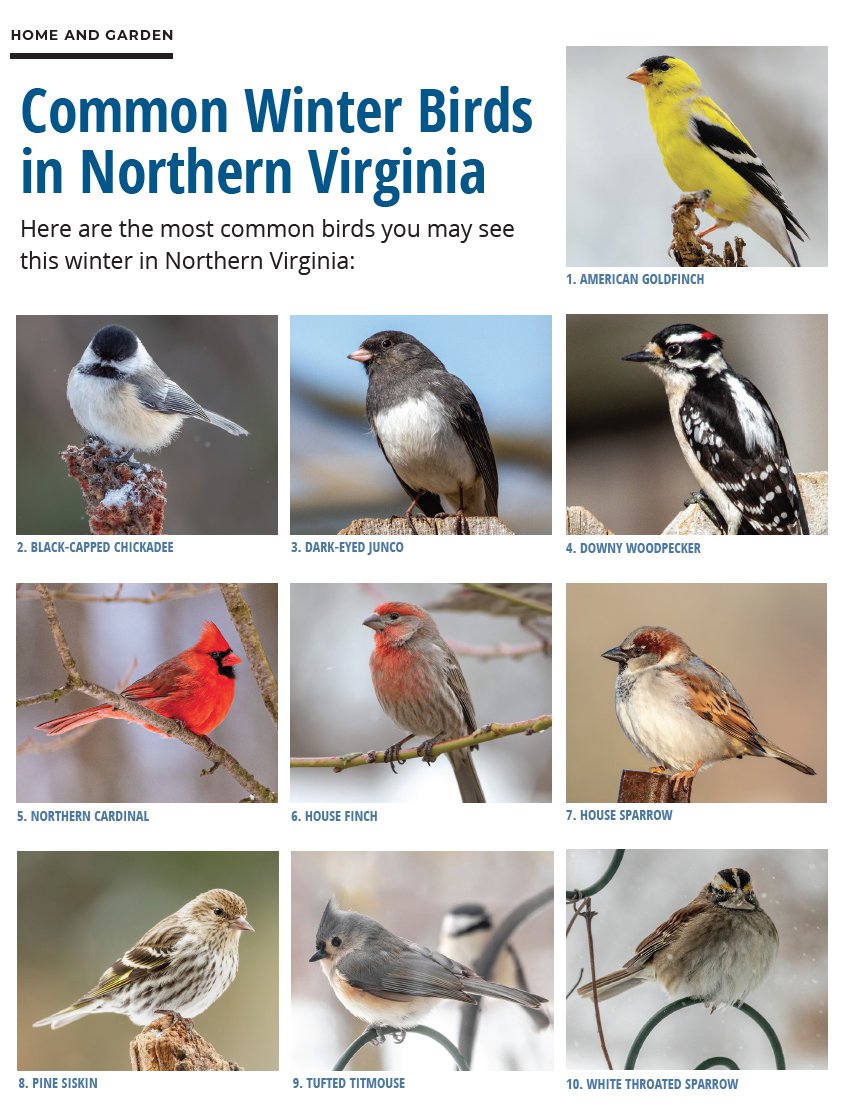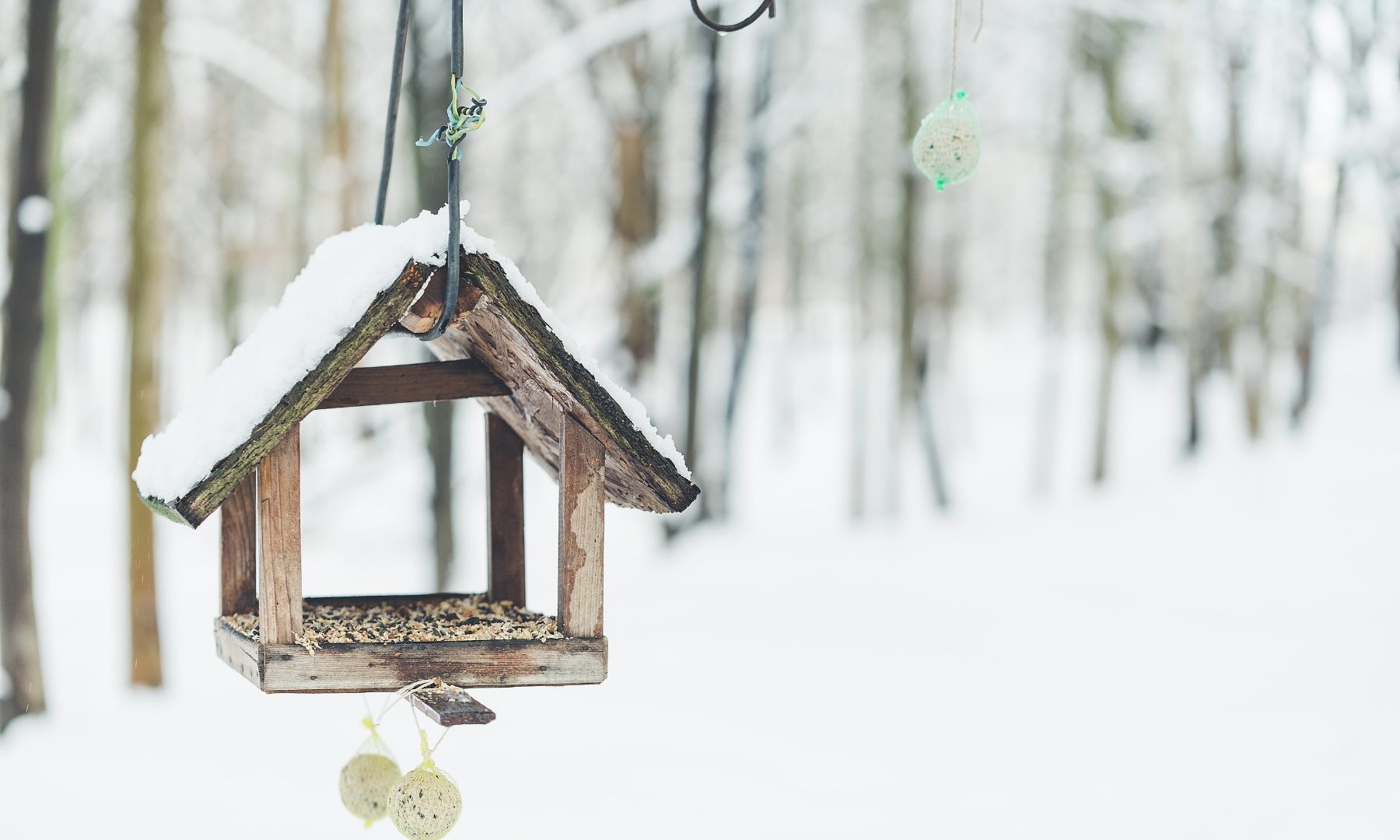During the winter months in Virginia, feeding birds becomes not only an act of kindness but also a source of delight for bird enthusiasts. The cold weather encourages many bird species to flock to feeders, making it an ideal time to set up a bird feeding station in the late fall. This proactive approach ensures that birds will already be familiar with the feeder and its location before the harsh weather sets in. However, it’s not just food that is important; providing fresh, unfrozen water is equally crucial for the well-being of our feathered friends. As for the lucky spectators, they can expect to see a variety of captivating winter feeder birds in Virginia, such as Dark-eyed Juncos, Northern Cardinals, Downy Woodpeckers, Tufted Titmice, Song Sparrows, and Carolina Chickadees, each with their own distinctive traits and preferred delicacies.

Importance of Feeding Birds in Virginia during Winter
Winter can be a challenging time for our feathered friends in Virginia. The colder temperatures and scarcity of natural food sources make it difficult for birds to find enough sustenance to survive. That’s why feeding birds during winter is of utmost importance. By providing them with a reliable source of food and water, we can make a significant impact on their survival and well-being.
Winter as a Critical Time for Bird Feeding
While birds have various ways of adapting to the changing seasons, winter is particularly harsh for them. With natural food sources such as insects, fruits, and seeds becoming scarce, birds often struggle to find enough nourishment to sustain themselves. Feeding them during this time can help supplement their diet and ensure they have the necessary energy to endure the cold temperatures.
The Benefits of Feeding Birds during Winter
Feeding birds during winter not only helps them survive, but it also offers a range of benefits for bird enthusiasts. Watching birds visit your feeder can be a delightful and rewarding experience, providing an up-close look at these beautiful creatures. Additionally, feeding birds can also help with pest control in your garden, as birds will consume insects and other unwanted pests.
Attracting Birds before Harsh Weather Arrives
To maximize the benefits of bird feeding, it’s essential to set up your feeder before the harshest winter weather arrives. Late fall is an ideal time to start attracting birds to your feeder. By doing so, you’re offering them a reliable food source just as their natural food supply dwindles. This early attraction can help establish your feeder as a trusted food station, ensuring birds return throughout the winter months.
Setting Up a Bird Feeder
Setting up a bird feeder requires careful consideration to ensure its effectiveness in attracting birds while providing them a safe and accessible feeding environment.
Choosing the Right Location for Your Bird Feeder
Selecting the right location for your bird feeder is crucial. It should be placed in a spot that is easily visible to birds while also considering their safety. Ideally, the feeder should be positioned near cover such as trees or shrubs, allowing birds to retreat quickly if they feel threatened. Additionally, placing the feeder near windows can provide you with an excellent view of the birds’ antics.
Types of Feeders to Consider
There are various types of bird feeders available, each catering to different bird species and feeding preferences. The most common types include platform feeders, hopper feeders, tube feeders, and suet feeders. Platform feeders are ideal for ground-feeding birds, while hopper feeders and tube feeders cater to a wide range of species. Suet feeders, on the other hand, attract birds that enjoy high-energy foods such as woodpeckers and nuthatches.
Selecting the Right Bird Feed
Choosing the right bird feed for your feeder is essential to attract the specific species you desire. Different bird species have varying dietary preferences, so offering a variety of seeds, nuts, and fruits can attract a diverse range of birds. Sunflower seeds, millet, and cracked corn are popular choices that appeal to many different species. Researching the feeding habits of the birds you hope to attract can help you determine the best food options.
Importance of Maintaining a Clean Feeder
Regularly cleaning your bird feeder is important for the health and well-being of the birds. Seeds and debris can accumulate, creating a breeding ground for bacteria and mold. A dirty feeder can be harmful to the birds, potentially spreading diseases. Therefore, it is crucial to clean your feeder on a regular basis, ideally once a month or as needed, to ensure the birds have a safe and hygienic feeding environment.

Providing Fresh Water for Birds
While food is essential for birds’ survival during winter, access to fresh, unfrozen water is equally important.
Water Sources for Birds in Winter
Finding water sources can be challenging for birds during winter, as natural water sources often freeze over. Providing them with a nearby water source in the form of a birdbath or shallow dish can be a lifesaver. Birds rely on water not only for drinking, but also for bathing and preening their feathers, which helps keep them warm and insulated during the cold winter days.
Preventing Water from Freezing
To ensure birds have access to water throughout winter, it’s crucial to prevent it from freezing. Using a heated birdbath or adding a floating heater to a regular birdbath can help maintain a constant water source. Alternatively, regularly replacing the water or using a birdbath heater to keep the water temperature above freezing can also be effective.
Importance of Clean Water for Birds’ Survival
Just like with feeding, providing clean water is essential for the health and well-being of birds. Dirty or contaminated water can lead to the spread of diseases among bird populations. Therefore, it’s important to regularly clean and refill the water source to ensure birds have access to clean, fresh water. Avoid using chemicals or detergents when cleaning the birdbath, as these can be harmful to birds. Simply rinsing the birdbath with hot water and scrubbing away any residue should be sufficient.
:max_bytes(150000):strip_icc()/winter-bird-feeding-tips-386586-hero-4bc5954beb3b4a82ad0384838f651eab.jpg)
Common Winter Feeder Birds in Virginia
Virginia is home to a variety of bird species that visit feeders during the winter months. Familiarizing yourself with these species and their preferences can help you attract them to your feeders.
Introduction to Dark-eyed Juncos
Dark-eyed Juncos, also known as “snowbirds,” are a common winter visitor to Virginia. They are easily identifiable with their grayish-black heads and white undersides. Juncos prefer feeding on seeds such as millet and cracked corn. Providing them with a ground feeder or low platform feeder will attract these delightful little birds to your yard.
Identifying and Attracting Northern Cardinals
The Northern Cardinal is a vibrant red bird with a distinctive crest on its head. These birds are a popular sight at feeders throughout Virginia. Cardinals are known to enjoy sunflower seeds and safflower seeds. Placing a hopper or tube feeder filled with these seeds in a safe and visible location can entice these beautiful birds to visit your yard.
Attracting Downy Woodpeckers to Your Feeder
Downy Woodpeckers are small, black-and-white woodpeckers with a bold pattern of spots on their wings. They are commonly seen feeding on suet feeders, as they have a particular fondness for this high-energy food source. By providing a suet feeder filled with a suet cake, you’ll have the pleasure of welcoming these charismatic woodpeckers to your yard.
Feeding Habits of Tufted Titmice
Tufted Titmice are small birds with a gray body, crest, and peach-colored sides. They are known for their friendly and curious nature. Tufted Titmice enjoy a variety of foods, including sunflower seeds, peanuts, and suet. A hopper or tube feeder filled with these foods will likely attract these delightful acrobats to your yard.
Song Sparrows: Food Preferences and Identification
Song Sparrows are small, brown birds with streaked undersides and a prominent dark spot on their chests. They tend to feed on various seeds, including millet and sunflower seeds. Offering a ground feeder or low platform feeder will provide these charming sparrows with a place to dine and entertain you with their melodic songs.
Carolina Chickadees: A Familiar Visitor to Your Feeder
Carolina Chickadees are small, plump birds with a black cap and a white face. They are a common sight at feeders throughout Virginia. Carolina Chickadees have a diverse diet, consisting of seeds, insects, and berries. Providing a variety of seeds and suet in a hopper or tube feeder will attract these lively birds to your yard.
By establishing appropriate feeding and watering stations and offering the right food and water sources, you can create a haven for birds during the winter months in Virginia. Not only will birds benefit from the nourishment you provide, but you’ll also have the joy of observing a diverse array of beautiful birds in your own backyard. So, grab your birdseed and get ready to enjoy the wonders of winter bird feeding in Virginia!

Leave a Reply